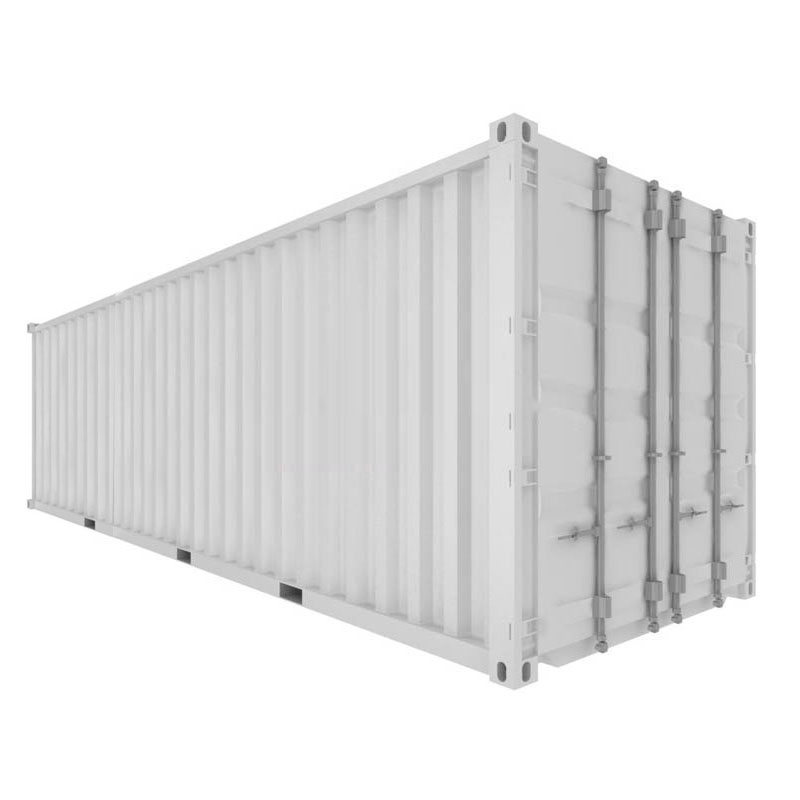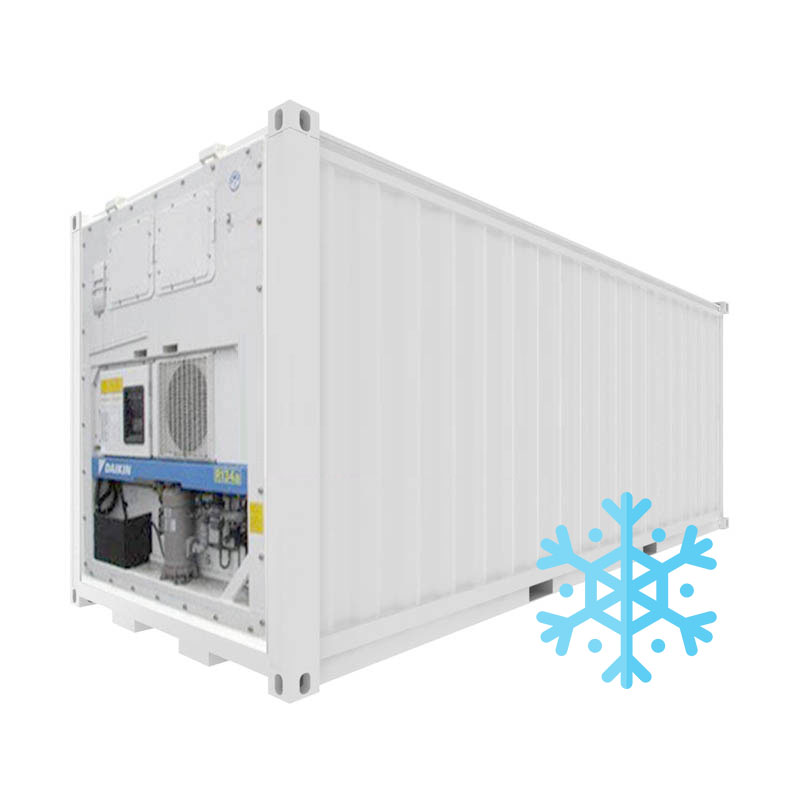Container Sales
Storage Solutions For All Needs and Budgets
Send a Message
A Step-By-Step Guide To Your Container Purchase
Select your Container
Container HQ offers a wide range of new and used shipping containers for sale. Our storage containers range in size from 10ft (3m), 20ft (6m) and 40ft (12m) in length. Whether you are a private individual looking for secure storage of your furniture and household items, or a large commercial business with stock overflow issues, Container HQ will help find a solution perfect for your requirements and within budget.
Refrigerated Containers
Temperature controlled units offering chilled or frozen storage solutions.
20ft High Cube Refrigerated Shipping Container
20ft Refrigerated Shipping Container
40ft High Cube Refrigerated Shipping Container
Specialised Containers
Containers with special features catering for diverse customer needs.
10ft Dangerous Goods (DG) Container
20ft Dangerous Goods (DG) Container
20ft Double Door Container
40ft Double Door Container
Quality Containers
Pick Your Own
Container HQ recommends you get in touch with us to inspect our stock at one of our depots to make sure you pick the right container for your requirements.
Fast and Efficient
Nationwide Delivery
In order to keep your shipping container transport costs as low as possible, we have a large network of conveniently placed container depots throughout New Zealand. This enables a quick and efficient delivery to your site with either a Swinglift or Hiab truck.
Competitive Pricing
Solutions for every budget


Want to know more?
Frequently Asked questions
The storage capacity inside a standard 20ft is approx 33.2 cubic meters or 1,170 cubic feet. A rule of thumb is that if properly packed, the contents of a 3 bedroom home will fit in a 20ft container.
The storage capacity inside a standard 40ft is approx 67.6 cubic meters or 2.387 cubic feet. A rule of thumb is that if properly packed, the contents of a 5 bedroom home will fit in a 40ft container.
Typically we would deliver your container one of three ways, via a Flatbed, Swinglift (Sideloader) or a Hiab (Crane) truck.
Flatbed, also referred to as a flat-deck or skeleton trailer, is a truck with no self-unloading capability. This means that offloading equipment will be required onsite such a forklift or a crane. Although this type of transport is the most restrictive in terms of its capability, it is also the cheapest form of container delivery to site.
Swinglifts come in either 20’ or 40’ length and have side on self-unloading ability. Swinglift offloads the container parallel to itself, requiring approx. 6m worth of width to allow for the container and truck to sit along each other. Swinglift is not capable of any 90 degree turns or positioning into really tight spots on space restrictive sites. Although a Swinglift is more restrictive in its offload capability than a HIAB, it is also more cost effective and a viable option for sites that can cater for this type of delivery.
HIAB is a truck equipped with a hydraulic crane, which can be rear or front mounted. HIABs are specialised equipment that allow for precise positioning of containers into small spaces at any angle required. Overhead obstructions such powerlines, overhanging trees and house eaves are common barriers that will impede HIAB delivery and something to be factored in during the delivery planning process.
Although HIAB offers superior offload capability and flexibility in terms of container positioning onsite, it is also more expensive than a swinglift option.
If you are unsure what type of transport mode listed above is the most applicable for your particular site, please let us know and we can carry out site inspection prior to delivery.
Yes, as this will alleviate issues that may arise with the container later on. Preferably your container should be placed on a flat level surface.If the surface is uneven we would recommend using wide blocks, railway sleepers or preferably treated timber (although any type of timber will do) to create a level surface under the container. An uneven surface can cause the container to twist making the doors quite hard to open and close. Additionally, lifting the container off the ground 100-150mm with appropriate blocks/timber will allow for additional airflow that will safeguard against any moisture entering the container through its plywood floor. This is especially important if the container is placed on the grass or any other moisture holding substrate.
Metal surfaces exposed to variations in temperature can produce condensation and unfortunately this is unavoidable in most cases. However, there are things that can mitigate this from occurring such as the following.
Ensuring the contents in your container is dry before you put it in will help to reduce moisture buildup inside your container. Naturally, the wet or damp goods with high moisture content will increase the potential of extra condensation accumulating in the container.
When loading the container it’s also a good idea to leave a little bit of space between the roof / sides of the container and your gear to allow air to circulate around all the nooks and crevices.
Another great preventative measure is airing the container from time to time, with once a week or fortnight highly recommended. By simply opening the container doors on a dry day is great to circulate the air inside the container.
All of our containers are equipped with factory fitted vents to improve air circulation inside the container. We can also fit larger vents as well as roof mounted whirly birds that will greatly increase the unit’s airflow capacity and thus greatly reducing potential of any condensation build up.
Absorber or dry poles are container desiccant intended to suck-up any moisture that might be developing in the container. These are specifically designed to be hung inside the container and sit within its sidewall corrugation. Keeping the container situated out of flooded areas will help immensely as the cold temperature on the outside forms condensation on the opposite side of the metal. Please check out our additional ventilation and moisture reduction options available on our accessories page.
Our containers are built tough from heavy gauge corrosion resistant Corten steel. Most containers are fully lockable, wind, water & vermin proof. All our New Build container come standard with a special lock box system that further protects your container’s contents. Second Hand containers usually don’t come with lock boxes as a standard inclusion, however we can arrange to have these welded on for an additional charge.
The beauty of purchasing a shipping container is that minimal upkeep is required. Simple maintenance tasks are outlined below.
Keeping the door hinges and locking bar lubricated using CRC every 6 months will ensure they move smoothly and easily.
Annual pressure washing will keep the unit clean and free of any contaminants and will in turn extend the life of the paint on the container, similar to your house.
After years of use and exposure to the sun and other elements, you may choose to repaint your container using specially developed container paint. Container HQ can supply a large selection of container paint colours and can also colour match the paint to suit your surroundings. The container can be repainted using a sprayer technique or even with a traditional brush or roller method.
Our new Shipping containers are made in China. They are built in the factory and then filled with cargo from China and sent on their maiden voyage to New Zealand. Once they arrive in New Zealand the cargo is unloaded, the container is cleaned and then it is ready for purchase.
Yes -Containers can be modified easily and can be as small as adding a door or some windows to building a home out of shipping containers. If you have ideas for a modification contact one of our friendly staff we would love to work with you on your project. We have a registered LBP inhouse who can assist with your project from start to finish.
Shipping containers are made from corrosion resistant cor-ten steel. This steel is known for its strength and durability and is designed to withstand the harsh sea conditions. The internal flooring is typically made from marine grade plywood or bamboo.
Shipping containers are deemed as temporary relocatable structures therefore many applications they do not require any planning permission. However, planning permission may be required if the container is going to be placed in a sensitive area that will impact another party in some way. If unsure we suggest to contact your local council to discuss your particular situation.
Yes we definitely buy back containers. A buy-back price would be on a case by case basis and we would take into consideration market price, transport costs and condition of the container. Sometimes we are unable to buy-back a container due to its condition or remote location,as it may be too far too far from our yards and therefore it may not be viable option. Please give us a call and we will work with you through some different options to come up with mutually beneficial solution.
The lifespan of a container will depend on the environment it is in and how it has been used throughout its life. A well looked after container should easily last for over 15+ years.
Want To Learn More About Our Services?
















